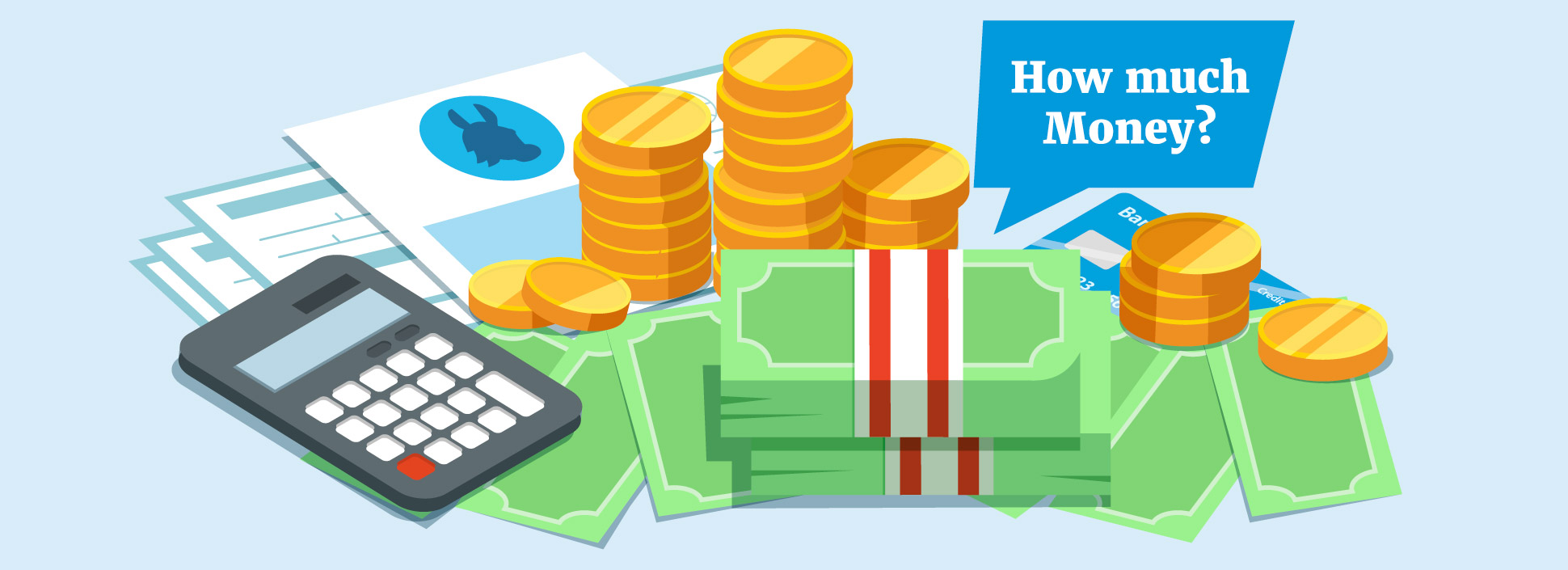

Finance
How To Rent To Own With Bad Credit
Published: January 8, 2024
Learn how to finance your dream home even with bad credit through our comprehensive guide on rent to own options.
(Many of the links in this article redirect to a specific reviewed product. Your purchase of these products through affiliate links helps to generate commission for LiveWell, at no extra cost. Learn more)
Table of Contents
Introduction
Are you struggling to find a way to become a homeowner even with bad credit? Rent-to-own may be the solution you’ve been searching for. Rent-to-own, also known as lease-to-own or lease purchase, is a popular option for individuals who want to achieve the dream of homeownership but are unable to qualify for a traditional mortgage due to their less-than-perfect credit score.
In this article, we will delve into the world of rent-to-own and explore how you can leverage this innovative strategy to overcome bad credit and finally own a home of your own. We will guide you through the process, uncover the pros and cons, and provide practical tips on finding suitable rent-to-own options.
So, if you’re ready to take control of your housing situation and turn your dreams of homeownership into a reality, let’s dive in and discover how you can rent-to-own with bad credit.
Understanding Rent-to-Own
Rent-to-own is a unique arrangement that allows individuals to rent a property with the option to purchase it at a predetermined price after a specific period of time. It combines elements of both renting and homeownership, offering a pathway for those with bad credit to eventually become homeowners.
Under a rent-to-own agreement, you will typically sign a lease agreement with the property owner or landlord, just like you would when renting a property. However, unlike a traditional rental agreement, a portion of your monthly rent payments will go towards building equity or a down payment on the property.
This accumulation of equity is what sets rent-to-own apart from traditional renting. Over the course of your lease, you have the opportunity to save up money and improve your credit score, putting you in a better position to secure a mortgage loan when the lease term ends and you decide to exercise your option to purchase the property.
It’s important to note that rent-to-own agreements can vary in their terms and conditions. Some contracts may require a larger upfront option fee, while others may offer more flexibility in terms of the purchase price and timeline. It’s crucial to carefully review the terms of the agreement and seek legal advice if needed before entering into a rent-to-own arrangement.
Now that we have a basic understanding of how rent-to-own works, let’s explore the advantages and disadvantages it presents.
Pros and Cons of Rent-to-Own
Rent-to-own arrangements offer several benefits for individuals looking to purchase a home, especially those with bad credit. However, it’s important to weigh these advantages against the potential drawbacks to make an informed decision. Let’s take a closer look at the pros and cons of rent-to-own:
Pros:
- Path to Ownership: Rent-to-own provides an opportunity to work towards homeownership, even if you have bad credit or are unable to secure a traditional mortgage.
- Time to Improve Credit: During the rental period, you have the chance to rebuild your credit score by making timely rent payments and responsibly managing your finances.
- Lock-in Purchase Price: Rent-to-own agreements typically lock in the purchase price of the property at the beginning of the lease term, protecting you from future price increases in the housing market.
- Test Drive the Property: Renting the property before making the final purchase decision gives you the opportunity to evaluate its condition, location, and suitability for your needs.
- Accumulation of Equity: A portion of your monthly rent payments is typically credited towards building equity or a down payment on the property, helping you build financial stability.
Cons:
- Higher Monthly Payments: Rent-to-own agreements often come with higher monthly payments compared to traditional rentals, as a portion goes towards building equity and the option to purchase.
- Non-refundable Option Fee: Some rent-to-own contracts require an upfront option fee, which is non-refundable even if you decide not to exercise your option to purchase the property.
- Market Uncertainty: The purchase price of the property is typically determined at the beginning of the lease term, so if the housing market experiences a significant decline, you could end up overpaying for the property.
- Lack of Flexibility: Rent-to-own agreements may come with stricter terms and conditions compared to traditional rentals, limiting your ability to make changes to the property or terminate the lease early.
- Potential for Foreclosure: If you fail to make timely rent payments or are unable to secure financing at the end of the lease term, you may lose the opportunity to purchase the property and could face eviction.
By carefully considering these pros and cons, you can determine whether a rent-to-own arrangement aligns with your financial goals and aspirations of homeownership. Now that we understand the advantages and disadvantages, let’s move on to the next section and explore the rent-to-own process in detail.
Rent-to-Own Process
The rent-to-own process involves several steps that you’ll need to navigate in order to successfully secure a rent-to-own agreement. While the specific details may vary depending on the circumstances and contracts involved, here is a general overview of the rent-to-own process:
1. Research and Identify Potential Properties:
Start by researching the local real estate market and identifying properties that are available for rent-to-own. Consider factors such as location, size, and amenities to find a property that meets your needs and preferences.
2. Contact Property Owners or Rental Companies:
Reach out to the property owners or rental companies to express your interest in their rent-to-own properties. Inquire about availability, rent-to-own terms, and any requirements they have for potential tenants.
3. Review the Terms and Conditions:
Obtain and thoroughly review the rent-to-own contract. Pay close attention to the rental period, purchase price, option fee (if applicable), rent credits, and any clauses or conditions that may affect your ability to purchase the property.
4. Get Pre-Qualified for a Mortgage (if required):
If the rent-to-own agreement requires you to secure financing to purchase the property at the end of the lease term, start the mortgage pre-qualification process. This will help you determine how much you can afford and demonstrate your commitment to becoming a homeowner.
5. Move into the Property:
If all parties agree to move forward, sign the rent-to-own contract and finalize the necessary paperwork. At this stage, you’ll move into the property and begin paying rent, with a portion of the payment going towards building equity or a down payment.
6. Improve Credit and Save for Down Payment:
Throughout the rental period, focus on improving your credit score by making timely rent payments and taking steps to address any outstanding debt. Additionally, save money to accumulate a sufficient down payment for when you eventually exercise your option to buy.
7. Exercise the Option to Purchase:
At the end of the lease term, typically ranging from one to three years, you’ll have the option to purchase the property at the predetermined price. If you’ve improved your credit and saved enough for a down payment, you can proceed with securing a mortgage loan and becoming a homeowner.
Remember, each rent-to-own arrangement may have unique requirements and processes. It’s crucial to thoroughly understand the terms and conditions of the contract and work with professionals like real estate agents and lawyers to ensure a smooth and successful rent-to-own experience.
Now that you understand the rent-to-own process, let’s explore the impact of bad credit and how you can improve your credit score to increase your chances of qualifying for a mortgage in the future.
Understanding Bad Credit and Its Impact
Having bad credit can significantly impact your ability to secure financing and achieve your financial goals, including homeownership. It’s important to understand what bad credit means and how it affects your options in the rent-to-own process.
Bad credit is a reflection of your creditworthiness and is typically indicated by a low credit score. Credit scores range from 300 to 850, with higher scores indicating better creditworthiness. Bad credit is often the result of late payments, high levels of debt, or a history of financial mismanagement.
When it comes to rent-to-own, bad credit can have several implications:
1. Limited Financing Options:
Traditional mortgage lenders may be reluctant to approve a loan for individuals with bad credit. This limitation can make it challenging to purchase a home through conventional means. However, rent-to-own can provide an alternative avenue for homeownership.
2. Higher Interest Rates:
If you do manage to secure financing with bad credit, you may be subject to higher interest rates. Lenders see individuals with bad credit as higher-risk borrowers and may compensate for that risk by charging higher interest rates.
3. Stricter Loan Requirements:
Lenders may impose stricter requirements, such as higher down payment percentages and more extensive documentation, for individuals with bad credit. These additional criteria can make it even more challenging to qualify for a mortgage loan.
4. Limited Options for Rent-to-Own Properties:
While rent-to-own can be a viable option for individuals with bad credit, some property owners or rental companies may have specific credit score requirements. This can limit the pool of available rent-to-own properties for individuals with bad credit.
However, despite the challenges of bad credit, there are steps you can take to improve your credit score over time. By doing so, you can increase your chances of qualifying for financing and achieving your goal of homeownership. Let’s explore some strategies for improving your credit score in the next section.
Improving Your Credit Score
If you have bad credit and want to improve your chances of qualifying for a mortgage or rent-to-own agreement, taking proactive steps to improve your credit score is essential. While rebuilding your credit may take time and patience, it is possible to make significant improvements. Here are some strategies to help you improve your credit score:
1. Check Your Credit Report:
Start by obtaining a copy of your credit report from each of the major credit bureaus – TransUnion, Equifax, and Experian. Review the report carefully for any errors, such as incorrect account information or late payments that were reported inaccurately.
2. Pay Bills on Time:
Payment history is one of the most crucial factors in determining your credit score. Make it a priority to pay all of your bills, including credit card payments, loan installments, and utility bills, on time. Consider setting up automatic payments or reminders to ensure timely payments.
3. Reduce Your Debt:
High levels of debt can negatively impact your credit score. Create a plan to pay down your existing debt, focusing on high-interest debts first. Consider consolidating your debts or reaching out to creditors to negotiate lower interest rates or payment plans.
4. Use Credit Wisely:
Make sure to maintain low credit card balances and avoid maxing out your credit cards. Responsible use of credit, such as keeping credit utilization below 30% and only applying for new credit when necessary, can positively impact your credit score.
5. Diversify Your Credit Mix:
Having a mix of different types of credit, such as credit cards, personal loans, and a mortgage, can demonstrate your ability to handle different financial obligations. If you have limited credit history, consider applying for a secured credit card or becoming an authorized user on someone else’s credit card.
6. Limit New Credit Applications:
Applying for multiple new credit accounts within a short period can negatively impact your credit score. Only apply for new credit when necessary, and limit the number of applications to avoid potential negative effects on your credit.
7. Seek Professional Help:
If your credit situation is complex or overwhelming, consider seeking help from a reputable credit counseling agency. They can provide guidance and assistance in developing a personalized plan to improve your credit score.
Remember, improving your credit score takes time and commitment. Stay focused on responsible financial habits, be patient, and monitor your progress regularly. By taking these steps, you’ll be well on your way to enhancing your creditworthiness and increasing your chances of qualifying for rent-to-own or mortgage options.
Now that we’ve explored strategies for improving your credit, let’s move on to the next section and discover how to find rent-to-own options that align with your needs.
Finding Rent-to-Own Options
Searching for rent-to-own options that fit your needs and budget can sometimes be a challenge. However, with the right approach and resources, you can uncover opportunities that align with your homeownership goals. Here are some effective strategies for finding rent-to-own options:
1. Online Listings and Real Estate Websites:
Start your search by exploring online platforms that specialize in listing rent-to-own properties. Websites like RentToOwnLabs.com, Rent.com, Zillow, and Trulia often have dedicated sections or filters for rent-to-own properties. Use these platforms to browse available listings in your desired area.
2. Local Real Estate Agents:
Reach out to real estate agents who are knowledgeable about the local market and experienced in handling rent-to-own transactions. They can provide valuable insights, guidance, and access to exclusive listings that you might not find through online searches.
3. Property Management Companies:
Contact property management companies in your area and inquire about any rent-to-own opportunities they may have available. These companies often have access to a wide range of rental properties and can help connect you with potential rent-to-own options.
4. Network with Homeowners and landlords:
Let family, friends, and acquaintances know that you are searching for a rent-to-own opportunity. They may have connections or be aware of homeowners or landlords who are open to lease purchase arrangements. Networking can help you discover hidden gems in the rental market.
5. Local Newspapers and Classifieds:
Check your local newspapers’ real estate section or classified ads for any rent-to-own listings. While online resources have become more popular, some property owners still choose to advertise through traditional print media.
6. Attend Real Estate Events:
Keep an eye out for real estate events, such as open houses or property auctions, in your area. These events can provide an opportunity to connect with property owners, real estate agents, and investors who may have rent-to-own properties available or can provide valuable leads.
7. Driving Around Neighborhoods:
Take a proactive approach by driving around neighborhoods you’re interested in. Look for “For Rent” signs and contact property owners directly to inquire about rent-to-own possibilities. Some landlords may be open to negotiating a rent-to-own agreement if approached directly.
Remember to thoroughly evaluate each rent-to-own option, considering factors such as the condition of the property, location, lease terms, and purchase price. Consult with professionals, such as real estate agents and attorneys, to ensure that all legal aspects of the rent-to-own agreement are properly addressed and understood.
Now that we’ve covered how to find rent-to-own options, let’s move on to the next section, which focuses on applying for rent-to-own with bad credit.
Applying for Rent-to-Own with Bad Credit
While having bad credit may present some challenges, it doesn’t necessarily mean you can’t apply for a rent-to-own agreement. Many property owners or landlords are open to working with individuals who have less-than-perfect credit. Here are some key steps to take when applying for rent-to-own with bad credit:
1. Be Honest and Transparent:
When communicating with property owners or landlords, be upfront about your bad credit. Explain any circumstances that led to your credit issues and highlight proactive steps you’ve taken to improve your financial situation. Honesty and transparency can go a long way in building trust.
2. Provide Supporting Documentation:
Accompany your application with supporting documentation that demonstrates your commitment to overcoming bad credit. This can include evidence of on-time rental payments, letters of recommendation from previous landlords, proof of stable employment, and documentation showing efforts to pay off outstanding debts.
3. Offer a Higher Security Deposit:
To alleviate any concerns about your creditworthiness, offer to pay a higher security deposit. A larger deposit reassures property owners that you are serious about the agreement and provides additional financial protection for the property.
4. Provide References:
Include references who can speak to your character and reliability. These references can be previous landlords, employers, or professionals who can vouch for your responsible behavior and ability to fulfill your financial obligations.
5. Demonstrate Stable Income:
Highlight your stable income and provide documentation, such as pay stubs or bank statements, to showcase your ability to make consistent rent payments. Property owners are often more interested in your current financial situation than your credit history.
6. Offer Automatic Rent Payments:
Suggest setting up automatic rent payments from your bank account. This shows commitment and eliminates the chance of late or missed payments, which can help alleviate concerns about your bad credit history.
7. Get a Co-signer or Guarantor:
If possible, consider finding a co-signer or guarantor with good credit to support your rent-to-own application. This person’s good credit can help alleviate concerns and provide additional reassurance to the property owner or landlord.
Remember, every property owner or landlord has different criteria and considerations when evaluating rent-to-own applicants. Don’t be discouraged if you face some rejections; keep exploring different options until you find the right fit. Working with a real estate agent who specializes in rent-to-own properties can also be beneficial, as they can guide you through the application process and advocate on your behalf.
Now that you know how to apply for rent-to-own with bad credit, let’s move on to the next section and explore how to negotiate rent-to-own terms that work in your favor.
Negotiating Rent-to-Own Terms
When entering into a rent-to-own agreement, it’s important to negotiate terms that work in your favor and align with your long-term homeownership goals. While the specific terms and conditions will vary depending on the property owner and the agreement, here are some key points to consider when negotiating rent-to-own terms:
1. Purchase Price:
Determine if the purchase price is fixed or if there is room for negotiation. Research comparable properties in the area to ensure the purchase price is fair and in line with market value. If the purchase price seems high, consider negotiating a lower price or an option to reevaluate the price closer to the end of the rental period.
2. Rent Credits:
In a rent-to-own agreement, a portion of your monthly rent payments typically goes towards building equity or a down payment on the property. Negotiate the percentage of rent credits that will be applied and ensure it is reasonable and beneficial for you.
3. Option Fee:
Determine if the rent-to-own agreement requires an upfront option fee. If so, negotiate the amount of the fee or explore the possibility of spreading it out over time to make it more affordable.
4. Duration of the Rental Period:
Discuss and agree upon the length of the rental period. This timeframe can range from one to three years. Consider your financial goals and ensure the rental period allows enough time for you to improve your credit and accumulate a sufficient down payment for securing a mortgage at the end of the lease term.
5. Maintenance and Repairs:
Clarify who will be responsible for maintenance and repairs during the rental period. Ideally, negotiate a fair agreement where the property owner takes care of major repairs while you handle day-to-day maintenance and minor repairs.
6. Flexibility in Terms:
If possible, negotiate flexible terms that allow for adjustments along the way. This could include the flexibility to exit the agreement early or extend the rental period if needed.
7. Independent Property Inspection:
Request the opportunity to conduct an independent property inspection before fully committing to the rent-to-own agreement. This will provide you with a clear understanding of the property’s condition and any potential issues that may need to be addressed.
Remember, negotiation is a two-way street, and both parties may have their own set of priorities and concerns. Be prepared to listen and find common ground to create a win-win situation. Working with a real estate agent or an attorney experienced in rent-to-own agreements can also be beneficial during the negotiation process.
Now that we’ve covered how to negotiate rent-to-own terms, let’s move on to the final section and discuss the steps to finalize the rent-to-own agreement.
Finalizing the Rent-to-Own Agreement
Once you have successfully negotiated the rent-to-own terms that suit your needs, it’s time to finalize the agreement and move forward towards your goal of homeownership. Here are the key steps to follow when finalizing the rent-to-own agreement:
1. Consult with Professionals:
Before signing any legal documents, it’s essential to consult with professionals who can provide guidance and ensure your interests are protected. Seek the advice of a real estate attorney or a real estate agent experienced in rent-to-own transactions.
2. Review the Agreement Thoroughly:
Carefully review the entire rent-to-own agreement, including all terms, conditions, and clauses. Ensure you understand your rights and obligations as outlined in the contract.
3. Clarify Key Points:
Address any questions or concerns with the property owner or landlord to ensure a clear understanding of the agreement. Clarify any ambiguous or unclear terms, such as the purchase price, rent credits, option fee, and maintenance responsibilities.
4. Inspect the Property:
Conduct a thorough inspection of the property to verify its condition and ensure it meets your expectations. Document any existing damages or repairs needed and make sure they are properly addressed in the agreement.
5. Sign the Documents:
Once you are satisfied with the terms and conditions, sign the rent-to-own agreement. Ensure that all parties involved, including the property owner or landlord, also sign the document.
6. Keep Copies of the Agreement and Supporting Documents:
Maintain copies of the signed rent-to-own agreement, as well as any supporting documents such as receipts, inspection reports, and communication related to the agreement. These will serve as essential references throughout the rental period and potential future home purchase.
7. Fulfill Your Responsibilities:
Once the rent-to-own agreement is in place, make sure to fulfill your responsibilities as outlined in the contract. Timely payment of rent, maintaining the property, and working towards improving your credit are essential to successfully progress towards homeownership.
During the rental period, stay in regular communication with the property owner or landlord and keep them informed of any changes or updates. Be proactive in addressing any concerns or issues that may arise.
Remember, rent-to-own agreements are legally binding, so it’s crucial to understand the terms and seek professional advice when needed. By finalizing the agreement correctly, you’ll be on your way to making your dream of homeownership a reality.
Congratulations on taking the first steps towards homeownership. Now, it’s time to focus on fulfilling your obligations, improving your credit, and preparing for the future purchase of your rent-to-own property.
If you have any further questions or concerns, don’t hesitate to reach out to a knowledgeable real estate professional who can provide guidance and support throughout this exciting journey.
Conclusion
Rent-to-own can be a viable option for individuals with bad credit who aspire to own their own home. Despite the challenges posed by bad credit, the rent-to-own process offers a pathway to homeownership by allowing you to rent a property with the option to purchase it at a later date. By understanding the intricacies of rent-to-own and taking proactive steps to improve your credit, you can work towards achieving your dream of owning a home.
We explored the various aspects of rent-to-own, including its definition, pros and cons, and the steps involved in the process. We also discussed the impact of bad credit and provided strategies for improving your credit score. Furthermore, we explored effective methods for finding rent-to-own options, negotiating favorable terms, and finalizing the rent-to-own agreement.
Remember, throughout the rent-to-own journey, it’s important to approach the process with transparency, responsibility, and perseverance. Be honest about your credit situation, provide supporting documentation, and demonstrate your commitment to improving your financial standing. Reach out to professionals within the real estate industry who can guide you and answer your questions along the way.
With consistent effort in making timely payments, improving your credit score, and fulfilling your responsibilities outlined in the rent-to-own agreement, you will be one step closer to achieving your goal of homeownership. Embrace the opportunity to build equity, save for a down payment, and test drive the property before making a long-term commitment.
Stay dedicated to your financial goals, seek support when needed, and remain proactive in your journey towards homeownership. Remember, each person’s rent-to-own experience is unique, so it’s crucial to find the approach that works best for you.
With patience, perseverance, and a positive mindset, you can navigate the challenges of bad credit and work your way towards owning a home through the rent-to-own process. Congratulations on taking the first step towards realizing your dream of homeownership with rent-to-own!














